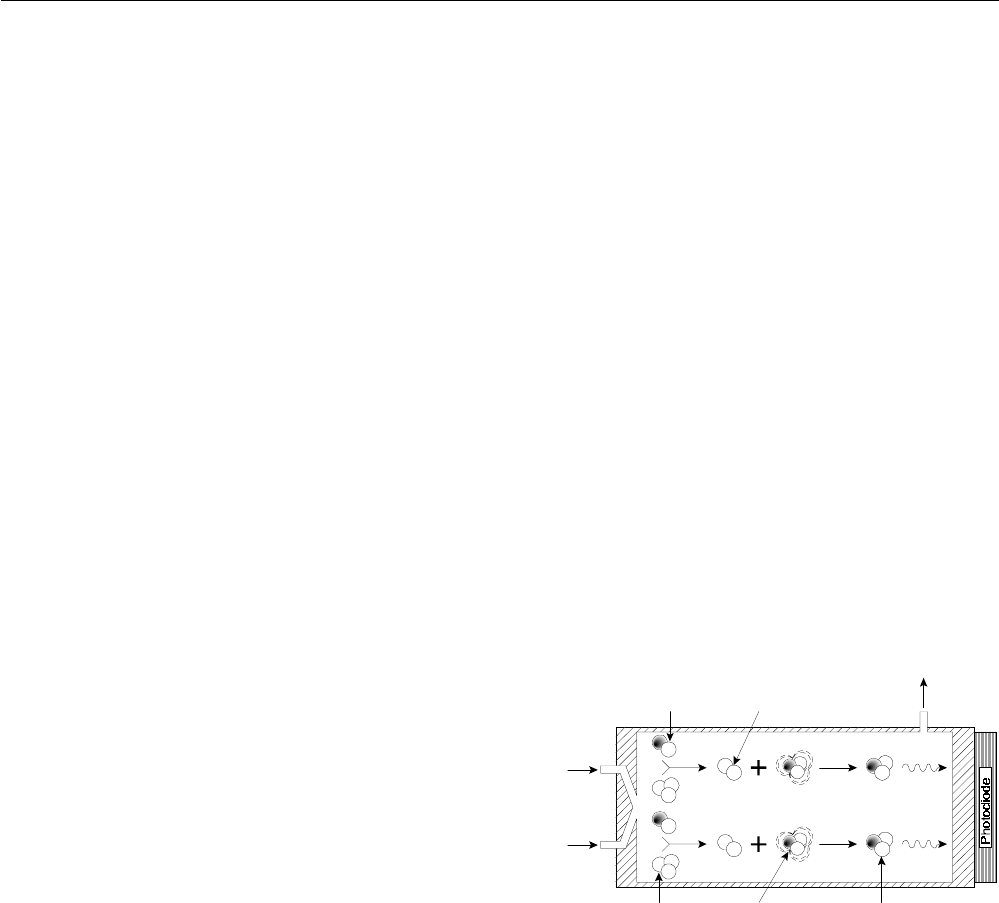
Instruction Manual
HAS60E-IM-HW
June 2007
NGA 2000 CLD
1 - 1Description and SpecificationsEmerson Process Management GmbH & Co.OHG
SECTION 1
DESCRIPTION AND SPECIFICATIONS
1-1 OVERVIEW
This manual describes the Chemiluminescence (CLD)
Analyzer Module of Emerson Process Mangement´s
NGA 2000 Series of gas analysis components (See Fig-
ure 1-2, Figure 1-3 and Figure 1-4).
The CLD Analyzer Module is designed to continously
determine the concentration of Nitric Oxide and oxides
of Nitrogen (NO plus Nitrogen Dioxide [NO
2
]) in a flow-
ing gaseous mixture. The concentration is expressed in
parts-per-million.
The CLD Analyzer Module is designed as a slide-in
module (if configured in stand-alone instrument fashion),
removable from the front of the Platform, with gas con-
nections made from the rear. All electronics relative to
sample detection and conditioning are included in this
module.
1-2 TYPICAL APPLICATIONS
The CLD Analyzer Module has specific applications in
the following areas:
• Oxides of Nitrogen emissions from the combus-
tion of fossil fuels in
Vehicle engine exhaust
Incinerators
Boilers
Gas appliances
Turbine exhaust
• Nitric acid plant emissions
• De-NO
x
control system
• Nitric oxide emissions from decaying organic
material (e.g., landfills).
1-3 THEORY OF TECHNOLOGY
The CLD Analyzer Module uses the chemiluminescence
method of detection. This technology is based on the
reaction of NO with ozone (O
3
) to produce NO
2
and oxy-
gen (O
2
). Some of the NO
2
molecules thus produced
are in an electronically excited state (NO
2
* - the "*“ refers
to the excitation). These revert immediately to the ground
state, with emission of photons (essentially, red light).
The reactions involved are:
NO + O
3
→ NO
2
* + O
2
NO
2
* → NO
2
+ red light
As NO and O
3
mix in the reaction chamber, the intensity
of the emitted red light is measured by a photodiode and
is proportional to the concentration of NO in the original
gas sample.
To measure NO
x
(NO + NO
2
), any NO
2
in the sample is
reduced to NO (at < 95 % efficiency) by being continously
passed through a heated bed of vitreous carbon (this
occurs before the sample gas is presented to the ozone).
Any NO initially present in the sample passes through
this converter stage unchanged before being routed to
the reaction chamber.
The photodiode generates a DC current, which is then
amplified, conditioned and expressed on the network as
the Primary Variable.
Figure 1-1: Function Principle of
CLD Measurement
1-4 FEATURES
Among the features included in the CLD Analyzer Mod-
ule are:
• 1) ozonator air loss shutoff and
• 2) NO/NO
x
mode capability.
Ozone
NO
O
3
Molecule
NO Molecule
O
2
Molecule
NO
2
Molecule
(excitated)
NO
2
Molecule
Exhaust


















